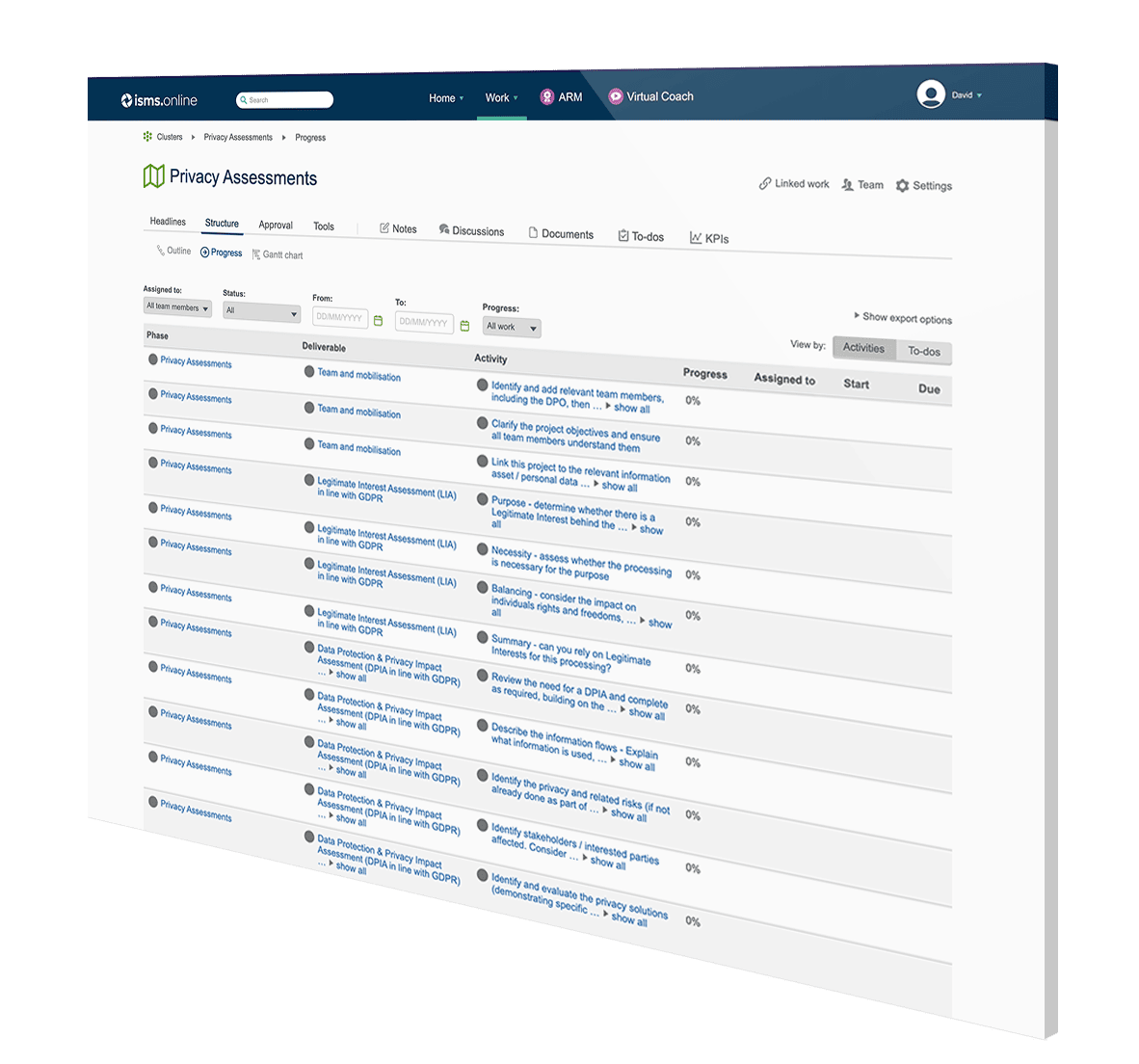
מרכיב חיוני של GDPR הוא למנוע סיכון לאבטחת המידע האישי. הערכת השפעת פרטיות (PIA) היא התהליך המסייע לארגונים לזהות ולהפחית את הסיכונים של כל פרויקט חדש פוטנציאלי.
הבחירה להתחיל בהערכת השפעת פרטיות (PIA) מופעלת בדרך כלל על ידי תכנון של פרויקט חדש. הסיבה לכך היא שהוא יכול לתת לך את ההזדמנות לנתח כיצד הפרויקט החדש עשוי להשפיע על הפרטיות של הלקוח, הלקוח או הצוות שלך.
לפי לשכת נציב המידע:
'עריכת PIA לא חייבת להיות מורכבת או גוזלת זמן, אבל חייבת להיות רמת קפדנות ביחס לסיכוני הפרטיות הנוצרים.'
אז קבעתם שאתם צריכים לערוך PIA, אבל מאיפה מתחילים? לפני שתעשה משהו, חשוב לוודא שה-PIA הוא תהליך גמיש המשולב בקלות בדרך העבודה והתכנון של הארגון שלך. כדאי גם להתחיל את ה-PIA בהרבה זמן. ה-ICO ממליץ לשקול את התחומים הבאים:
ייעוץ עם גורמים רלוונטיים לאורך תהליך ה-PIA עוזר לך להישאר על המסלול הנכון. התייעצויות פנימיות יכולות להבטיח שבעלי העניין והצוות יהיו מחויבים לכך הגנה על נתונים כמו שאתה.
בעת עריכת רשימה של מחזיקי העניין הפנימיים שלך, קחו בחשבון את אלו שצפויים להיות מעורבים בפרויקטים, כמו מהנדסים ומפתחים, קונים ומשווקים. עליך לכלול גם את קצין הגנת הנתונים שלך (DPO) אם יש לך כזה, ואת צוות ניהול הפרויקט. בעת התייעצות עם גורמים חיצוניים, קחו בחשבון את אלו שיושפעו מהפרויקט.

כמה מהשיקולים המרכזיים מפורטים להלן:
כל זה ועוד מוגדר מראש בתוכנת ISMS.online עבור GDPR. אתה תעקוב אחר זרימות עבודה סטנדרטיות וניתנות לשחזור עם שיתוף פעולה ואישורים בצוות. יהיו לך סביבות עבודה שנבנו במיוחד כדי ללכוד את כל הראיות ולקשר לרחבה יותר תאימות ל- GDPR הפרויקט, לרבות עיבוד רשומות הנתונים האישיים, נכסים, ספקים/מעבדים וסיכונים.
ניהול סיכונים מטופל מזיהוי והערכה ועד להערכה וטיפול.

100% מהמשתמשים שלנו משיגים אישור ISO 27001 בפעם הראשונה